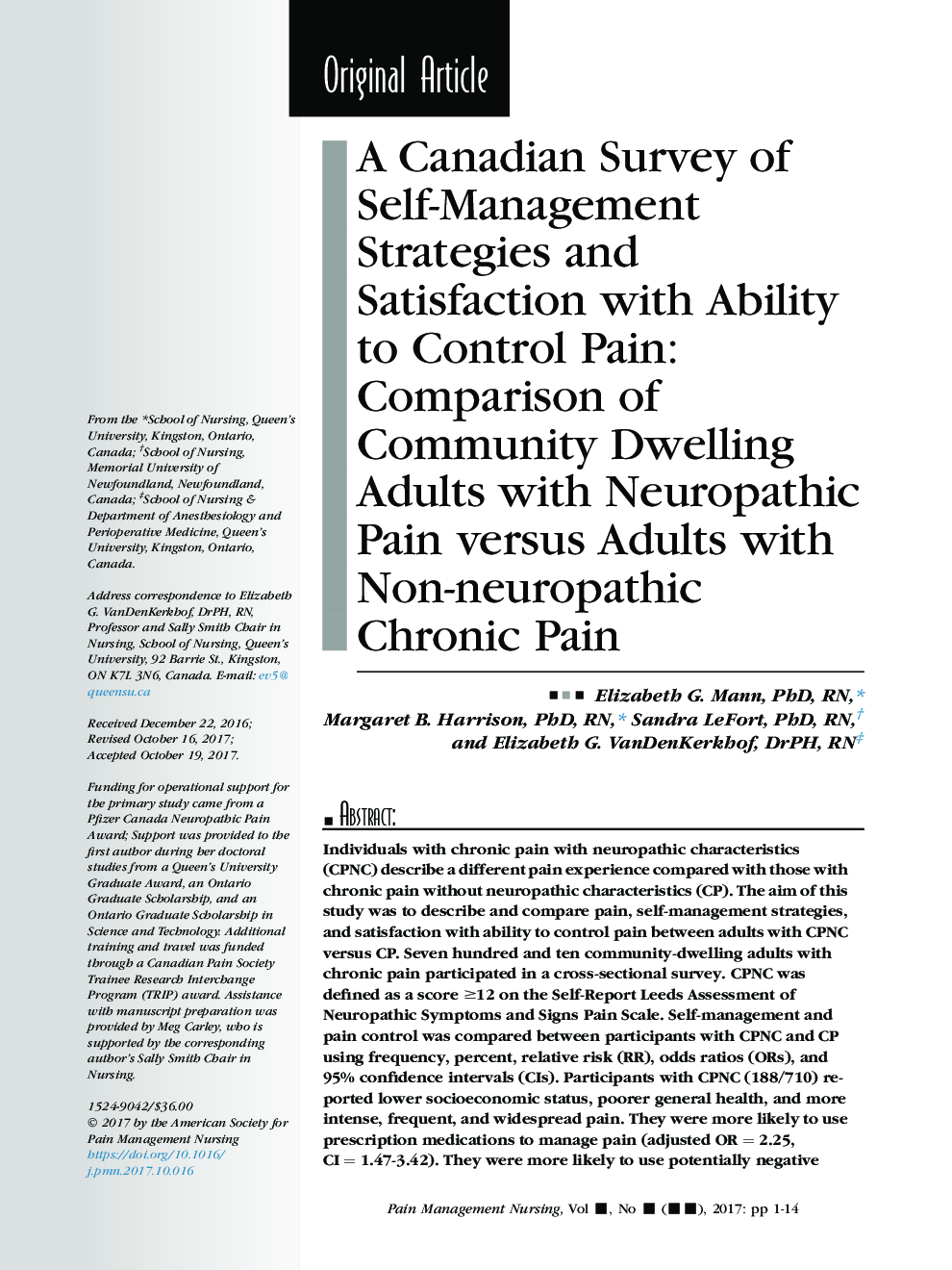| Article ID | Journal | Published Year | Pages | File Type |
|---|---|---|---|---|
| 8578680 | Pain Management Nursing | 2018 | 14 Pages |
Abstract
Background: Individuals with chronic pain with neuropathic characteristics (CPNC) describe a different pain experience compared with those with chronic pain without neuropathic characteristics (CP). Aims: The aim of this study was to describe and compare pain, self-management strategies, and satisfaction with ability to control pain between adults with CPNC versus CP. Participants: Seven hundred and ten community-dwelling adults with chronic pain participated in a cross-sectional survey. Methods: CPNC was defined as a score â¥12 on the Self-Report Leeds Assessment of Neuropathic Symptoms and Signs Pain Scale. Self-management and pain control was compared between participants with CPNC and CP using frequency, percent, relative risk (RR), odds ratios (ORs), and 95% confidence intervals (CIs). Results: Participants with CPNC (188/710) reported lower socioeconomic status, poorer general health, and more intense, frequent, and widespread pain. They were more likely to use prescription medications to manage pain (adjusted OR = 2.25, CI = 1.47-3.42). They were more likely to use potentially negative strategies to ease the emotional burden of living with chronic pain, including substance use (adjusted OR = 1.58, CI = 1.06-2.35), denial (adjusted OR = 2.21, CI = 1.49-3.28), and behavioral disengagement (adjusted OR = 1.68, CI = 1.16-2.45), and they were more likely to be completely dissatisfied with their ability to control pain (RR = 1.77, CI = 1.21-2.58). Conclusions: Individuals with CPNC have distinct pain and self-management experiences compared with those with CP that may lead to negative coping strategies and dissatisfaction with ability to control pain. Therefore, self-management assessment and support should be tailored by pain condition.
Related Topics
Health Sciences
Medicine and Dentistry
Anesthesiology and Pain Medicine
Authors
Elizabeth G. PhD, RN, Margaret B. PhD, RN, Sandra PhD, RN, Elizabeth G. DrPH, RN,
